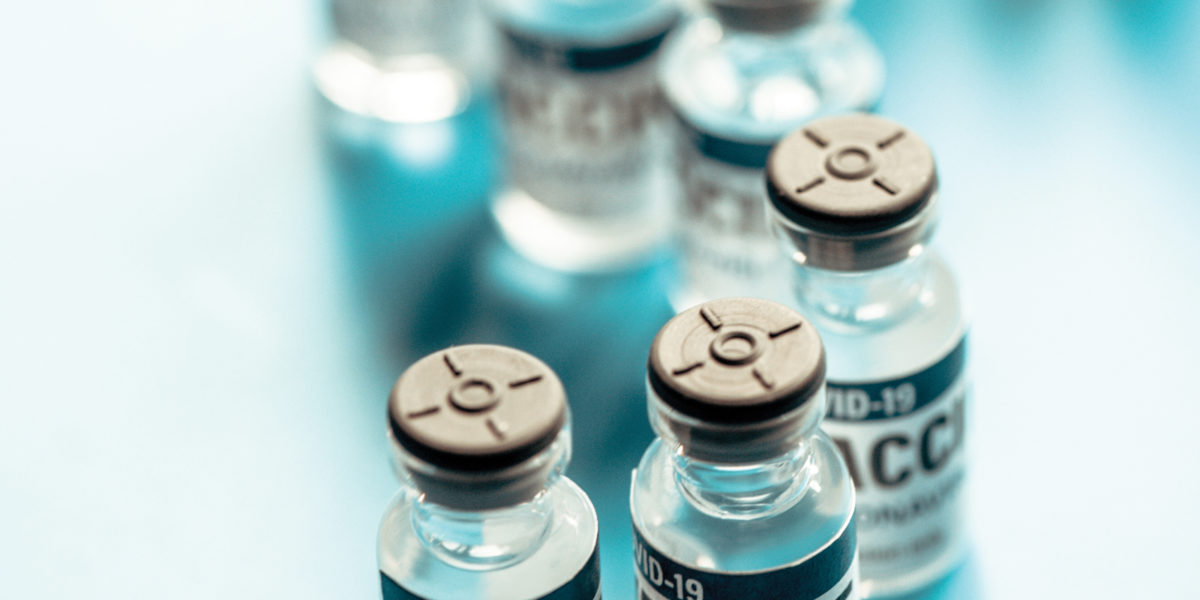
Healer or Slayer?
A Case of Cyanide Poisoning
November 2021

This month marks Colorado Lawyer’s 50th year in print. To reflect on how much has changed—and how much has stayed the same—we’re looking back at some of our most memorable articles. Our second throwback article is by Tenth Circuit Staff Attorney Frank Gibbard, our Historical Perspectives columnist, who’s been telling fascinating tales about early Colorado cases for nearly two decades. I asked Frank for his G.O.A.T., and he proposed this intriguing piece about a Denver businessman who checked into the Windsor Hotel but never checked out. Click here to see all the throwback articles.
***
In 1880, at the height of Colorado’s “silver boom,” a consortium of British investors known as the Denver Mansion Company, Ltd., constructed the Windsor Hotel at the corner of 18th and Larimer Streets. The Windsor soon earned a reputation as one of Denver’s grandest hotels. Guests admired its spacious lobby filled with sumptuous statuary and artwork, gilded pillars, and diamond dust mirrors. When in session, the Colorado Legislature assembled informally at the Windsor’s extravagantly furnished bar to conduct business.1
Over the next eighty years, the Windsor experienced cycles of decline and renewed popularity. Silver “King” Horace Tabor died in relative poverty in his room there in 1899.2 The hotel spent most of the 1920s and 1930s as a flophouse3 before being renovated and restored to some of its former grandeur in 1938. By the time it was torn down in 1959, the Windsor had hosted the famous and the infamous, including Horace Tabor’s wife “Baby Doe”; former U.S. President Ulysses S. Grant; con artist Jefferson Randolph “Soapy” Smith4; and lawman and gunman Tom Horn.5 Writers Oscar Wilde and Jack Kerouac also spent time there.
Like many old hotels, the Windsor had its share of ghosts and dark tales.6 One such tale unfolded on March 14, 1892, on the hotel’s fifth floor. What transpired in Room 519 was not only shocking and tragic—it sparked a twelve-year course of litigation that included two jury trials and two appellate decisions.
Room 519
At about 3:00 on the afternoon of March 14, 1892, Denver businessman Adolf Schayer arrived on the fifth and highest floor of the Windsor Hotel. He did not know it yet, but he was already too late. He knocked on the door to Room 519. No one answered. The room was locked from the inside.
Schayer was deeply worried. An hour earlier, his close friend Jacob Boehm, a partner in the respected Denver firm of Boehm & Co., had come to the hotel alone to rent a room. When he left Schayer earlier, Boehm had been visibly distressed by a business reversal. He was not a habitue of the Windsor Hotel; this was his first stay there, in fact. When checking in, he told the hotel clerk that he needed a room where he could lie down.
When there was no response to his knocks, Schayer solicited the assistance of a boy who happened to be passing by, and boosted him through the transom. The boy unlocked the room from the inside.
A Ghastly Scene
Inside the room, Schayer was stunned by what he saw. Boehm’s corpse lay on the bed, flat on his back. His head was thrown back at a 45-degree angle. His mouth was open, his eyes were partially open, and his body was still warm. His fingernails were blue. He had removed his shoes and his coat, unbuttoned his vest and shirt collar, and untied his necktie.
In Boehm’s vest pocket, Schayer found a one-ounce vial labeled “Sol. Cyanide of Potassium.” The label bore the name of a druggist, Neil Dahl. Later, testimony would show that Boehm had obtained the bottle of cyanide from his family physician, Dr. Muir.
Schayer also found a tumbler with a brownish liquid in it, the same color as the liquid in the vial. In an act of courage, or perhaps foolhardiness, Schayer smelled and tasted the liquid in the glass, which he found was like bitter almonds. Other witnesses also described the bitter almond smell. The undertaker later stated that he also detected the smell on Boehm’s lips.
Testimony would show that the smell of bitter almonds is consistent with cyanide. Testimony also would show that Boehm knew that potassium cyanide is a deadly poison.
The Insurance Policy
On October 23, 1891, about six months before his death, Boehm had purchased a life insurance policy in the amount of $30,000 with the Germania Life Insurance Company of New York (Germania). He assigned the policy to his creditor, the First National Bank of Denver (Bank), naming George E. Ross-Lewin as trustee. After Boehm’s death, Ross-Lewin and the Bank demanded payment on the policy. Germania refused to pay, citing a provision of the policy that absolved it of liability if, within three years of issuance, the insured died by suicide.
Ross-Lewin Sues Germania
Ross-Lewin and the Bank sued Germania to recover on the policy. Germania answered that recovery was barred, because Boehm had killed himself. The only real question was whether Germania had presented sufficient evidence of suicide to go to a jury. After Germania presented its case, the district court decided it had not, and entered a directed verdict for the plaintiffs. Germania appealed.
First Appeal—to the Colorado Supreme Court
The two appellate decisions in the Ross-Lewin case make for interesting reading. The Colorado Supreme Court’s decision in 18977 does not mention many of the facts that the Colorado Court of Appeals found crucial to its decision in 1904. It is not clear whether the Supreme Court ignored facts that would have undermined its decision, or whether these facts did not surface until after the second trial. It seems unlikely, however, that many of the facts in favor of Ross-Lewin that the Colorado Court of Appeals described in its decision were unavailable to the Colorado Supreme Court, given the district court’s directed verdict in favor of Ross-Lewin.
The issue in both appeals, stripped to its essentials, was the same: could the evidence support a verdict that Boehm committed suicide? The two courts reached opposite results.
Strange Behavior at the Arcade Restaurant
The evidence discussed by the Supreme Court showed that Schayer’s concern for his friend began several hours before he discovered the body in Room 519. Around noon on March 14, Schayer, Boehm, and a man identified only as Mr. Farmer dined at the Arcade Restaurant on Larimer Street. After the three men sat down at the table, Boehm ate some soup and then suddenly excused himself, saying he needed to telephone his partner, Mr. Steinbok, to let him know where he was. When he returned from the telephone call, Boehm appeared pale and agitated. He told his friends he no longer wanted to eat and that he wanted to leave instead. The other men said they would leave with him.
When they left the restaurant, the three men stopped at a cigar stand, where Boehm purchased cigars for himself and his two friends. Boehm told Schayer he wanted to speak to him alone about some business. The two men separated from Farmer, and walked along Larimer Street, toward Boehm’s store.
Boehm’s Last Encounters
As they walked, Boehm became very agitated. “Adolph,” he told his friend, “they have got me; the sheriff is in possession of the place now.”8 “My God,” he continued, “I didn’t think George would do it!”9
Schayer asked what he was talking about. Boehm explained that the First National Bank of Denver had seized the assets of Boehm & Co. under a writ of attachment. Boehm then stopped on the sidewalk and said, “Adolph, I want you to promise me one thing. I want you to be as good a friend to my wife as you have been to me.”10
Boehm’s words alarmed Schayer. He became so concerned that he decided to search his friend right there on the sidewalk. It is not clear what he was looking for. Perhaps he thought Boehm had a gun. He ran his hands over Boehm’s hip pockets and searched his clothes, but found nothing.
Schayer resolved to stay with his friend until the crisis passed. However, when they reached the Boehm & Co. store, Boehm entered without him. While Boehm was inside the store, Schayer made a brief but fateful trip to the office of a nearby doctor. When he returned to Boehm & Co., Boehm was gone.
Testimony later showed that while Schayer was visiting the doctor, Boehm met with his attorney, Earl B. Coe. It is not known what they discussed. Coe left Boehm, going first to his own office, then to Boehm’s residence. The two men separated around 2:00 p.m. It was the last time Coe saw Boehm alive.
Somehow, Schayer figured out that Boehm had gone to the Windsor Hotel. He traveled to the hotel to find his friend. The hotel’s register indicated that Boehm had checked into Room 519.
Supreme Court’s Decision
The Colorado Supreme Court faced two significant issues in the insurance company’s appeal. First, Germania contended that the trial court had erred in excluding the coroner’s verdict ruling Boehm’s death a suicide.11 The Supreme Court upheld the trial court’s decision excluding the coroner’s verdict. The Court held that a coroner’s verdict should not be admitted for the purpose of proving suicide, because “the purpose of inquisitions of this character is merely to furnish the foundation for a criminal prosecution in case the death is shown to be felonious.”12 The Court further noted that:
[l]aw writers of late have frequently animadverted upon the carelessness with which such inquests are frequently conducted, and to allow inquisitions to be used in a suit between private parties growing out of the death of the deceased, as in this case, would be to introduce an element of uncertainty into the practice, which, we think, would be contrary to public policy, and pernicious in the extreme[.]13
The second assignment of error was more problematic. Germania had sought to introduce the testimony of a highly qualified expert witness, Dr. John T. Eskridge,14 for the purpose of proving that Boehm’s death was consistent with cyanide poisoning. The district court excluded the testimony, because Dr. Eskridge “had no actual experience with poisoning from cyanide of potassium.”15 The Supreme Court held that the district court committed clear error by excluding this testimony. The district court’s rule was impractical and unduly restrictive. The Court noted that:
[n]ew poisons are constantly being discovered by scientists, and under the rule announced by the district court all inquiry as to the result of such new poisons upon the human system from experts would be excluded.16
If experts were permitted to testify only concerning the effect of known poisons with which they had actual experience, this “would offer a premium to the ingenuity of criminals and others in the selection of rare and unusual poisons to destroy human life.”17
Given this error, the question arises as to whether the evidence in favor of the insurer was sufficient to require reversal of the directed verdict for the plaintiffs. The Supreme Court held that it was. Initially, this result may seem strange. The insurance company had a strong circumstantial case, even without Dr. Eskridge’s testimony, that it was cyanide that killed Boehm. The real problem was whether Boehm took the cyanide intending to kill himself, or whether he died by accident or for some other reason.
The sufficiency of evidence on that issue was hardly discussed at all in the Supreme Court’s analysis. The Court simply concluded:
We are of the opinion that the evidence properly admitted, and that which was offered and erroneously refused, was sufficient to entitle the defendant to have the defense of suicide submitted to the jury; and although such plea, to prevail, must be established by clear and satisfactory evidence, it may, nevertheless, be so established by circumstantial evidence.18
Perhaps the insurer focused its appellate issues primarily on the question of exclusion of evidence rather than its sufficiency. In any event, it was an omission that would come back to haunt the case seven years later, requiring a second appellate decision.
Second Appeal—to the Colorado Court of Appeals
On remand, the district court held a jury trial. The jury reached a verdict for the insurer—that Boehm had committed suicide. This time, it was Ross-Lewin’s turn to appeal.19
The Court of Appeals began its decision by summarizing the evidence presented at the second trial. Much of the evidence was identical to that described in the Supreme Court’s previous decision. However, there were additional facts this time around that cast a whole new light on the case. These facts also help explain why the district court initially had directed a verdict in favor of Ross-Lewin.
Additional Evidence: The Prescription
The Supreme Court had noted that the cyanide vial in Boehm’s pocket contained the name of a druggist. The Court of Appeals filled in additional details about how Boehm obtained the cyanide. It had been prescribed for Boehm by Dr. Meuer20 and compounded by the druggist from the prescription, just four days before Boehm’s death.
Additional Evidence: Medical Uses of Cyanide
The Supreme Court had described cyanide as a deadly poison. The Court of Appeals noted that although potassium cyanide is a virulent poison, it is “sometimes prescribed by physicians as a medicine.”21 Dr. Meuer testified that “he had used cyanide of potassium as a medicine a good deal; that he had used it mainly for lung troubles; that it was also used for neuralgic troubles, and for diseases of the respiratory organs.” He also testified that it could not cure disease and that he used it to provide temporary relief only.22 A. J. Ward, who had filled the prescription for Boehm, testified that “retail druggists . . . used [cyanide] for medicinal purposes only.”23
Additional Evidence Unfavorable to the Trustee
The Court of Appeals’ decision includes additional evidence unfavorable to Ross-Lewin, suggesting that Boehm’s death was in fact a suicide. There was testimony by Schayer, to which Ross-Lewin objected, that a month or six weeks before his death, Boehm asked Dr. Meuer for poison to put down a favorite dog. Dr. Meuer suggested potassium cyanide, which would result in a quick and painless death.
Earl B. Coe, Boehm’s attorney, testified that when he met Boehm at Boehm’s store, Coe was about to leave for Arizona. Boehm gave him a bottle of whiskey, saying “It is something to think of me on your trip.”24
Court of Appeals’ Decision
The issue that preoccupied the Court of Appeals was whether the jury should have been permitted to hear evidence about Boehm’s conduct and statements before his death. The court noted that it was Germania’s duty to prove that Boehm killed himself, and that there was a presumption against suicide. The mere fact that Boehm took cyanide was not enough to prove that he intended to kill himself, given the medical uses for that drug. The court concluded that Boehm’s prior words and actions could be used against him only if they were parts of the res gestae—that is, parts of one continuous transaction that culminated in Boehm’s ingestion of cyanide in accordance with his expressed intent to kill himself.
Surprisingly, the court concluded that under these facts, the required connection was absent. It gave two reasons: (1) the lapse of time between Boehm’s statements and his ingestion of the poison; and (2) the lack of a clearly expressed intent to commit suicide. This reasoning is unexpected, given the traditional deference accorded to a jury’s ability to draw inferences from the facts of a case. The Court of Appeals appeared to be saying that the presumption against suicide is so strong, and the evidence here so weak, that the jury should not be allowed to draw such an inference. It was the district court’s duty, in fact, to exclude the evidence to prevent the inference from being drawn.
The court may have undermined its reasoning by its amateur attempt at psychoanalysis. On the issue of time lapse, for example, it opined:
Mental agitation in the presence of financial disaster is not unusual. It is very rare to find a person who can preserve a serene countenance while his fortune is being swept away, and to assume that excited conduct or speech under the influence of temporary distraction produced by misfortune is in itself evidence of intention to commit suicide would contradict experience. As a rule, after the first shock has passed, a feeling of hope, inherent in man, asserts itself, and the impulse is towards efforts to retrieve the loss. Cases of suicide caused by the pressure of adverse circumstances are exceptional. If the language attributed to Boehm may be interpreted as an expression of an intent to commit suicide, the spoken words were completely separated from the final act by lapse of time, and, in our opinion, were no part of the res gestae.25
On the issue of lack of clearly expressed intent, the court opined:
But we find nothing in the words attributed to Boehm indicative of any certain intent. His remark, upon handing the whisky to Mr. Coe, that it was something to remember him by on the trip, is absolutely without meaning, except as expressive of good fellowship. His request that Schayer would be a good friend to his wife, and his refusal to have her sent for, possibly have some significance. They might be said to point to a contemplated enforced absence from his wife, and it is possible they were associated in his mind with the idea of suicide; but they were equally consistent with an intention to abscond.26
The Court of Appeals reversed the jury’s verdict and remanded for a new trial. The only saving grace, perhaps, was that a third jury would hear a great deal less evidence about Jacob Boehm’s last, sad day of life.
Conclusion
After Ross-Lewin, the case disappears from the Reporters. It is not clear whether a third jury trial ever was held. Perhaps the parties threw in the towel after twelve years and settled.
We may never know what Jacob Boehm intended when he took his fatal dose of cyanide. However, anyone who has read the conflicting decisions of two different courts is likely to develop his or her own opinion on the subject.
Notes
1. See Karsner, Silver Dollar: The Story of the Tabors 158 (Crown Publishers, 1932). The Colorado State Capitol Building was not occupied until 1894, and its gold plating was not installed until 1908. See www.colorado.gov/dpa/doit/archives/cap/gold.htm. Like everything else about the Windsor, its bar was magnificent. The counter was made of Colorado pine and California redwood. Its mirror was 90 x 120 inches and was one of the country’s largest. Three thousand silver dollars lined the barroom floor. Buchanan and Buchanan, A Story of the Fabulous Windsor Hotel 10 (2d ed., Hirschfield Press, 1956). Harry Haye Tammen, who styled himself the “world’s best bartender,” served as its head barkeep. Buchanan and Buchanan, Id. at 17.
2. Buchanan and Buchanan, supra note 1 at 280–82. For a time, Horace Tabor and his wife Elizabeth McCourt, better known as “Baby Doe,” lived in the Windsor Hotel’s lavish bridal suite. Some sources indicate Tabor also was an investor or part owner of the Windsor. See, e.g., www.babydoetabor.com/babydoedivorce.htm. He died in a much plainer four-room suite, numbered 302. Buchanan and Buchanan, supra note 1 at 21–26. Tabor’s last words were: “This is the happiest moment of my life. I am at peace and resigned to the will of God.” Id. at 26.
3. In their book, the Buchanans vividly capture the atmosphere inside the dying hotel after the Windsor opened its doors to the derelicts roaming Larimer Street:
There were smells—of potatoes fried in stale grease, or cheap tobacco, of roach killer, of rooms with unopened windows, of disease, and of stale beer. There were night sounds—of a drunken quarrel, of ambulance sirens, of some bum sick with bootleg booze, of a lipsticked laugh, of hushed whispers, of complaining tires and gunshots, of a woman’s weeping, of a man’s weeping, of a cheap would-be-Tabor’s boasts. Backwash city sounds.
Buchanan and Buchanan, supra note 1 at 30.
4. See Gibbard, “Official Misconduct: Wolfe Londoner and the Denver Mayoral Election of 1889,” 36 The Colorado Lawyer 91, note 3 (Nov. 2007).
5. See en.wikipedia.org/wiki/Tom_Horn.
6. The Windsor served as a transient hotel (or “flophouse”) for many years. More than one lost soul leaped from the upper floors of the stairwell to his or her death, earning one of the staircases the name “suicide stairway.” Buchanan and Buchanan, supra note 1 at 34.
7. Germania Life Ins. Co. v. Ross-Lewin, 51 P. 488 (Colo. 1897).
8. Id. at 489.
9. Id.
10. Id.
11. The coroner was none other than Colonel John Milton Chivington, infamous for his role in the 1864 Sand Creek Massacre. See Id. at 490. See also en.wikipedia.org/wiki/John_Chivington. Interestingly, the district court was of the opinion that coroners’ verdicts can be admitted in a civil proceeding like this one under some circumstances, but that this particular verdict “was impeached for irregularity in the proceeding by the evidence of Col. Chivington.” Germania Life Ins. Co., supra note 7 at 490.
12. Germania Life Ins. Co., supra note 7 at 490.
13. Id. at 491.
14. The Supreme Court described Dr. Eskridge’s qualifications as follows:
Dr. Eskridge testified that he graduated from Jefferson Medical College, of Philadelphia, about 19 years before, and that he has been regularly and constantly engaged in the practice of his profession since that time; that he was duly licensed to practice medicine under the laws of Colorado; that toxicology was a part of the medical instruction received at college, and that he had made this branch of his profession a special study for 12 or 13 years; that he had been a lecturer and teacher in toxicology for 4 or 5 years; that he was familiar with all the authorities and had them at the time in his library; that, while he had no experience in treating a case of poisoning from cyanide of potassium, he had, in his experience, treated many other cases, extending over a large field; that he had had nearly 100 cases of suicide or homicide from poisoning; that he had had, probably, 18 cases of arsenical poisoning; some 15 cases of opium poisoning; cases of poisoning by belladonna, by carbolic acid; one case of nitric acid poisoning; one case of veratria de veri poisoning; two cases of aconite poisoning; and one of bichloride of mercury, or corrosive sublimate, poisoning.
Id.
15. Id.
16. Id.
17. Id. at 492.
18. Id.
19. Ross-Lewin v. Germania Life Ins. Co., 78 P. 305 (Colo.App. 1904).
20. The doctor’s name is spelled “Muir” in the first opinion.
21. Ross-Lewin, supra note 19 at 306.
22. Id. at 307.
23. Id.
24. Id. at 306.
25. Id. at 308.
26. Id.


